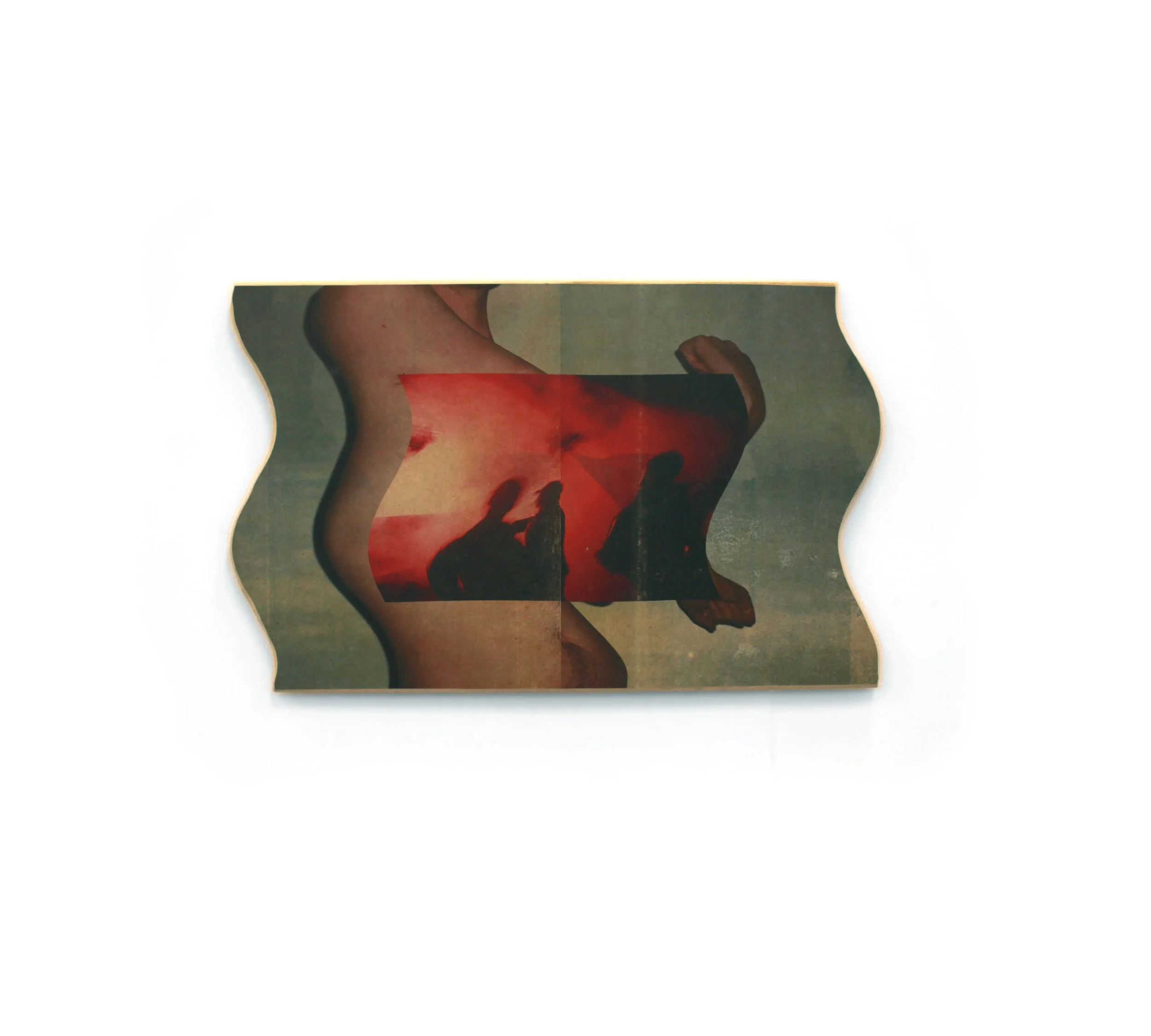Annabelle McEwen, No Place Between, 2022, image transfer on MDF, 34 x 55 x 2 cm. Image courtesy of the artist.
Annabelle McEwen
Annabelle McEwen (b. 1997) is a multidisciplinary artist practising on unceded Gadigal Land (Eora/Sydney) with a Masters of Fine Art from The National Art School. McEwen has been shown in many exhibitions, most recently including Fisher’s Ghost Art Award at Campbelltown Arts Centre, BLACKBOX at Schmick Contemporary, and Freaks of Nature at aMBUSH Gallery. She was awarded The Ellen O’Shaughnessy Printmaking Award in 2019. McEwen was recently published with her article Image Transfer and The Virtual Gaze in The Print Council of Australia’s IMPRINT Magazine. She has taught at numerous institutions including The National Art School, UNSW Art and Design and Bankstown Arts Centre. McEwen’s work is in many collections including The National Art School Archive and The City of Sydney Art Collection.
6 | Annabelle McEwen, No Place Between, 2022, image transfer on MDF, 34 x 55 x 2 cm. $480.
7 | Annabelle McEwen, Landline, 2022, image transfer on MDF, 42 x 54 cm. $480.
Annabelle McEwen’s practice considers how users of digital landscapes achieve agency in an algorithmically curated space. She uses corrupted images of the body and the self as a visual metaphor for the affect of cyber navigation on prosumers as well as interrogating the significance (or lack there) of corporeality. Annabelle employs ubiquitous and insidious algorithms and artificial intelligence as tools to disrupt images—interfering with the capital-driven power of data collection, and the ensuing parasitic algorithmically dictated scrolls. Realisation of my works occur when the digitally constructed images are transferred onto new substrates. The act of printing creates a layer of intervention, warping the image when it’s relocated from the digitally printed material to the final surface. Distortion is investigated further by physically manipulating substrates, allowing the prints to undulate with the folded form, metaphorically suggesting how one’s virtual existence can have real world impacts and have the potential to distort perception of reality. The transfer technique allows us to pause the whirling cycle of digital mediation through interruption in order to focus and examine the power these images may have and to speculate on existential futures.


